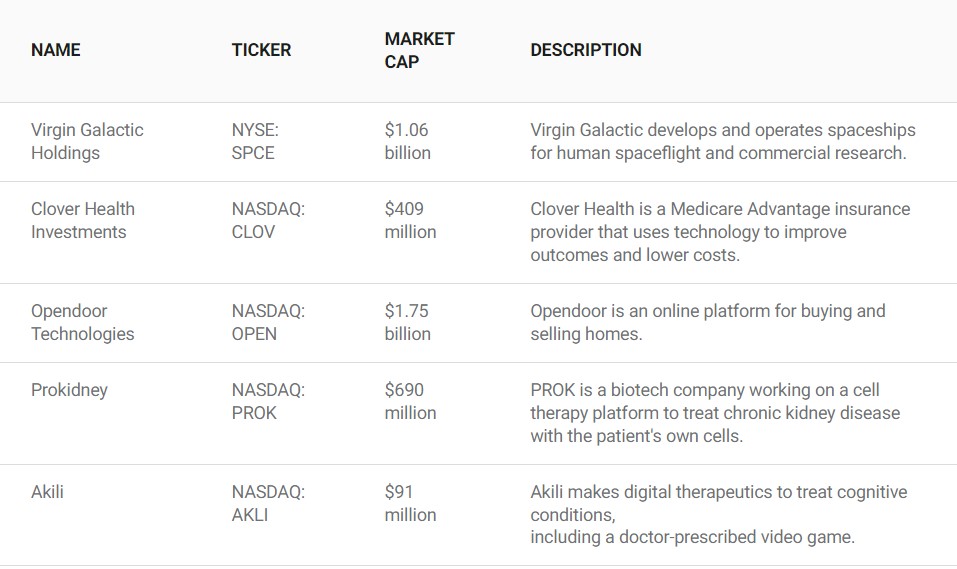Three Stocks to Sell ASAP
The right stocks can make you rich and change your life.
The wrong stocks, though… They can do a whole lot more than “underperform.” If only! They can eviscerate your wealth, bleeding out your hard-won profits.
They’re pure portfolio poison.
Surprisingly, not many investors want to talk about this. You certainly don’t hear about the danger in the mainstream media – until it’s too late.
That’s not to suggest they’re obscure companies – some of the “toxic stocks” I’m going to name for you are, in fact, regularly in the headlines for other reasons, often in glowing terms.
I’m going to run down the list and give you a chance to learn the names of three companies I think everyone should own instead.
But first, if you own any or all of these “toxic stocks,” sell them today…
Big Lots (BIG)
With a sprawling inventory ranging from toys and clothing to household essentials and even groceries, Big Lots has etched its presence across more than 1,400 locations.
However, the tides haven’t been in Big Lots’ favor in the year 2023. With an inflationary breeze blowing, one might expect the company to thrive, as value-conscious individuals typically seek refuge in discount havens.
Yet, the path has been strewn with hurdles for Big Lots. Rather than basking in prosperity, the company grappled with augmented costs, the looming specter of higher interest rates, and the vexing entanglements of supply chain issues. As the landscape shifted, even the customary refuge of tax refunds took a hit, courtesy of the 2022 tax year, curtailing the spending vigor of patrons within the halls of Big Lots stores.
Dividend investors were also let down as the company reacted to these pressures by suspending its 30-cent-per-share dividend.
[stock_market_widget type=”accordion” template=”extended” color=”#5679FF” assets=”BIG” start_expanded=”true” display_currency_symbol=”true” api=”yf”]
Fisker (FSR)
In the competitive electric vehicle (EV) industry, survival is tough for startups. Although Fisker has begun delivering its EVs, it’s just the beginning, and challenges lie ahead. The EV market is crowded, with many established players.
While Fisker reported record revenue from Ocean SUV deliveries, it reduced its production target to 20,000-23,000 vehicles from 32,000-36,000. Q2 deliveries were only 11 EVs, generating $825,000 in revenue. Operating expenses reached $128 million; capital expenses were $91.3 million. The stock is now at $5.86, down 14% this year from $10 in August 2022.
Though Fisker has started production, its long-term outlook is uncertain. The recent termination of a stock offering adds to concerns. While it might have cash to continue for a year, the bigger picture doesn’t look promising. Consider selling FSR stock before it falls further.
[stock_market_widget type=”accordion” template=”extended” color=”#5679FF” assets=”FSR” start_expanded=”true” display_currency_symbol=”true” api=”yf”]
Telus Corp. (TU)
Telus Corp. is one stock to steer clear of post-earnings. The Canadian company experienced a drastic 60% decline in profit and swiftly decided to slash 6,000 jobs. This workforce reduction includes 4,000 positions at its Vancouver headquarters and 2,000 more across its international operations, including the U.S. The announcement followed Telus’ report of a 60% year-over-year drop in Q2 net income, which settled at $196 million.
Adding to the unfavorable picture, the net income of 14 cents per share fell short of analysts’ projections of 22 cents per share. Despite a 13% increase in revenue from $4.40 billion to $4.95 billion compared to the previous year, the company’s profitability remained challenged. Telus had already revised down its annual 2023 guidance in July before the Q2 release due to demand pressures and the need for cost-cutting measures. The revised forecast now anticipates revenue growth of 9.5% to 11.5% for the year, down from the earlier estimate of 11% to 14%.
With TU stock experiencing a 23% decline over the past 12 months and a 3% decrease over a five-year span, it’s evident that this stock is best avoided following its Q2 earnings report.
[stock_market_widget type=”accordion” template=”extended” color=”#5679FF” assets=”TU” start_expanded=”true” display_currency_symbol=”true” api=”yf”]














